
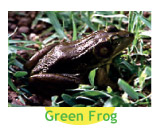 |
 |
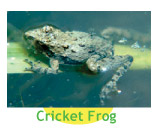 |
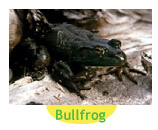 |
 |
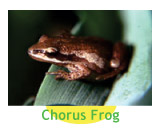 |
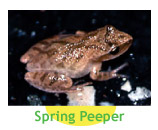 |
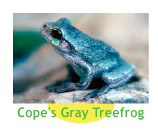 |
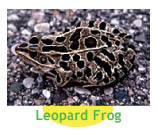 |
A Frog's Life. . .
Frogs are cold-blooded, or "poikilothermic," which means that their body temperature is affected by their surroundings. Frogs have very interesting life cycles. Like all amphibians, adults breed and lay eggs in small bodies of water, like ponds or streams. Although many frogs remain tied to the water, toads, tree frogs and some others spend nearly their entire adult lives on land. All frogs and toads must return to water, though, to breed.Playing Their Part
Frogs and toads are vital components of the ecosystem. Adult frogs eat insects and other small animals and are in turn preyed upon by larger predators. Tadpoles are primarily vegetarian, but they also serve as scavengers. Tadpoles can be a significant food item for fish, mammals, and even other adult frogs. Did you know that frogs live in a wide variety of climates? On every continent except Antarctica!Endangered!
In the Chicago region, volunteers have joined a nationwide effort to count frogs. The Chicago Wilderness organization enlists the help of volunteers to record the presence and location of frogs. Eventually, this long term collection of information could be an important key to identifying the causes for changes in frog populations.Here at Fermilab. . .
Only eight species of frogs are fairly commonly found here at Fermilab. In fact, northern Illinois is home to only about twelve different kinds of frogs, mostly because of our harsh winters.Fermilab has a wealth of good frog habitats. Large expanses of lakes, ponds, streams and wetlands, plus abundant wooded areas are perfect for frogs and toads.



